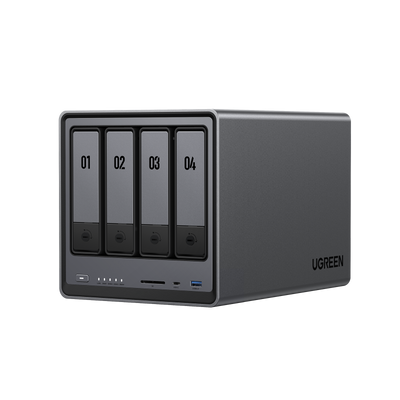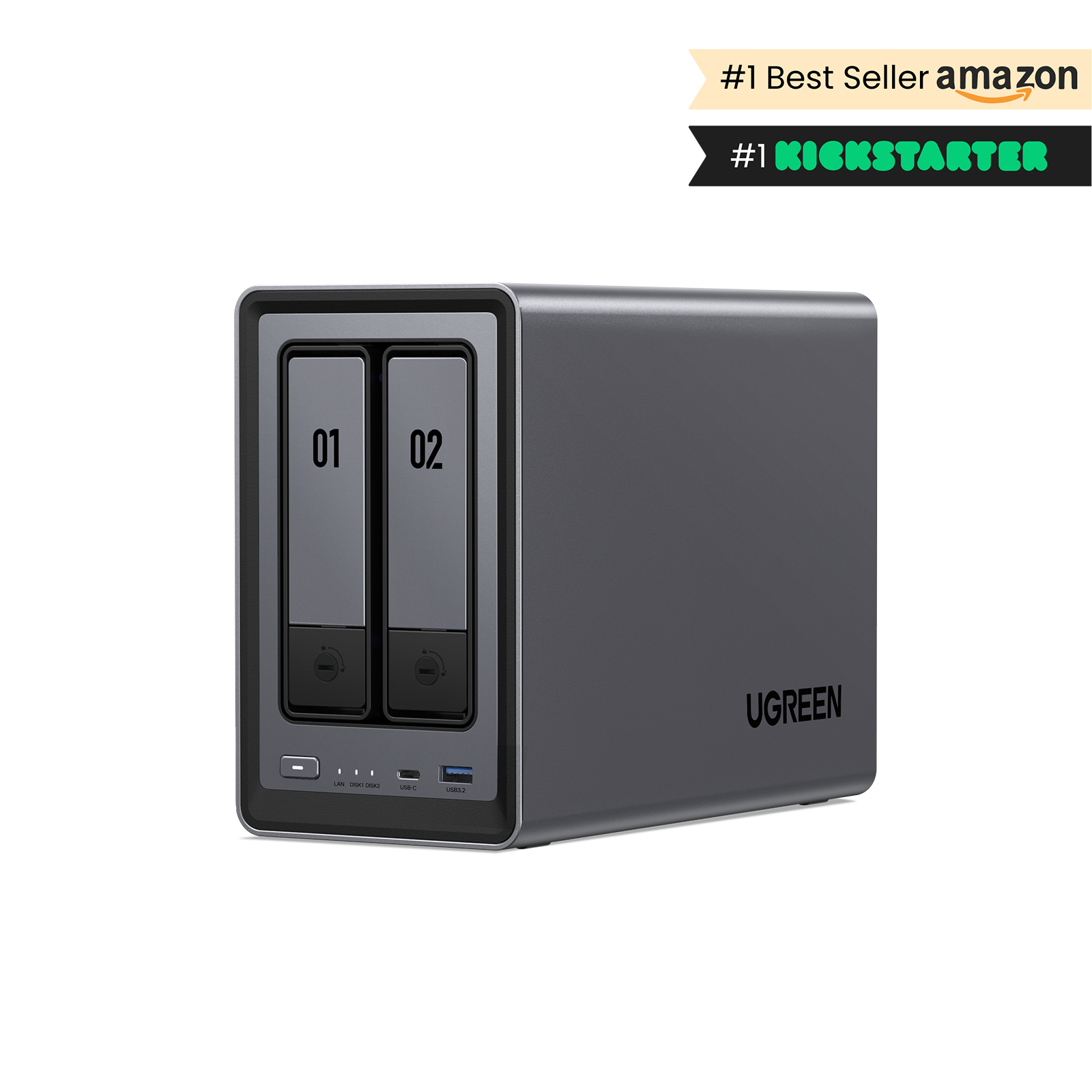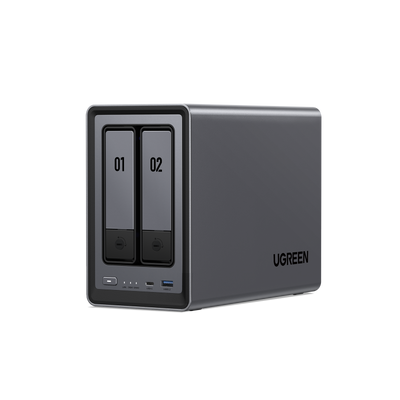RAID Array Failure in NAS: Step-by-Step Recovery Guide for 2025
RAID (Redundant Array of Independent Disks) is a common strategy for protecting data, but even the most reliable systems can fail. When the storage that holds your irreplaceable family photos or important documents suddenly becomes inaccessible, it can feel like a disaster. Fortunately, many RAID failures are recoverable—and you don’t need to be an IT expert to take the right steps toward recovery.

Key Takeaways:
- RAID failures stem from hardware issues (drive/controller failures, power surges), software corruption, or environmental factors like overheating.
-
Recovery depends on your RAID level:
- RAID 1: Replace failed drive and rebuild from mirror.
- RAID 5/6: Rebuild via parity data (risk second drive failure during rebuild).
- RAID 0: Professional recovery rarely succeeds—backups are essential.
- Immediate actions matter: Check NAS logs for errors, listen for drive clicking (mechanical failure), and power off if physical damage is suspected to prevent further data loss.
- RAID ≠ backup: UK GDPR requires secure data access; always follow the 3-2-1 backup rule (three copies, two media types, one off-site) to mitigate legal/financial risks.
- Seek professionals for complex failures: Multiple drive losses, controller issues, or business-critical data demand specialized RAID recovery services with GDPR-compliant handling.
Understanding RAID and Its Failure Mechanisms
Your NAS is a central repository for everything from business contracts to personal memories. RAID technology distributes this data across multiple drives to enhance reliability and, in some cases, performance. However, even the best systems are vulnerable.
1. Common Points of Failure
A RAID array’s integrity can be compromised in several ways:
-
Hardware Issues:
- Drive Failures: Hard drives have a finite lifespan and can fail due to mechanical wear, electronic faults, or physical damage. If you’re building a NAS for home use and want reliability without the added hum, consider choosing from the best quiet NAS hard drives designed specifically for low noise and 24/7 operation. These options can help extend your system’s lifespan while keeping your workspace peaceful.
- RAID Controller Malfunctions: The controller is the brain of the array. If it fails, the entire system can become inaccessible.
- Power Surges: Unstable power or electrical storms can cause catastrophic damage to sensitive electronics within the NAS. To avoid such scenarios, consider implementing effective NAS power outage protection measures. These steps can significantly reduce your risk and keep your data safe during unexpected outages.
-
Software Corruption:
- File System Errors: Corruption can render the file system unreadable, making data inaccessible even if the drives are physically healthy.
- Misconfigured Settings: Incorrect setup or accidental changes to the RAID configuration can lead to instability or data loss.
-
Environmental Factors:
- Overheating: Insufficient ventilation can cause components to overheat, leading to premature failure.
- Physical Damage: Accidental drops, impacts, or liquid spills can cause immediate and severe damage.

2. RAID Levels and Failure Resilience
Each RAID level has a different tolerance for drive failure:
- RAID 0: Offers high performance but no redundancy. The failure of a single drive results in the loss of all data.
- RAID 1: Mirrors data across two drives, providing excellent redundancy. If one drive fails, the other continues to function.
- RAID 5: Can withstand the failure of one drive. Data can be rebuilt from parity information, but the rebuild process itself places stress on the remaining drives.
- RAID 6: Can withstand the failure of two drives, offering a higher level of protection suitable for larger arrays.
- RAID 10: Combines the speed of striping with the redundancy of mirroring. It can tolerate multiple drive failures, provided they do not occur within the same mirrored pair.
Related reading: RAID 0 VS RAID 1.
3. Implications for UK GDPR
For UK businesses, data loss has significant legal implications. The UK GDPR mandates that personal data must be kept secure and accessible. A RAID failure without a robust recovery and backup plan can constitute a data breach, leading to regulatory fines and reputational damage.
Assessing the Situation: Your Roadmap to RAID Recovery
1. Identify the RAID Level
Knowing your configuration is the first step. RAID 1 uses mirroring for safety, while RAID 5 uses parity for a balance of storage and protection.
- How to Check: Log into your NAS interface; this information is typically found under “Storage Manager” or a similar section. If you cannot access the interface, refer to your original setup notes. A 2-bay NAS is likely RAID 1, while a 4-bay or larger system could be RAID 5, 6, or 10.
{{UGPRODUCT}}
2. Determine the Type of Failure
- Single Drive Failure: Recoverable in redundant arrays like RAID 1, 5, 6, and 10.
- Multiple Drive Failures: Catastrophic for RAID 5. RAID 6 and 10 may survive, depending on which drives have failed.
- Controller Issues: A failed RAID controller can render a healthy set of drives unreadable.
- How to Investigate: Check your NAS system logs for specific error messages, such as “degraded array” or “controller failure.” Physical indicators like flashing red lights or audible error beeps can also provide clues.
3. Check for Physical Damage
- Audible Noises: Clicking or grinding sounds are a sign of imminent mechanical failure.
- Overheating: An unusually hot NAS indicates stress on the internal components.
-
Visible Damage: Any obvious physical trauma to the enclosure is a major concern.
If you suspect physical damage, power off the device immediately to prevent further harm.
Recovery Methods by RAID Level
Your recovery strategy is dictated by your RAID configuration.
- RAID 0 Recovery: With no redundancy, data recovery from a failed drive is often impossible without a backup. Professional data recovery services may be able to recover partial data if the drive damage is not severe, but success is not guaranteed.
-
RAID 1 Recovery:
- Replace the failed drive with a new one of equal or greater capacity.
- Initiate the rebuild process through the NAS interface. The system will mirror the data from the healthy drive to the new one.
- Before rebuilding, it is crucial to check the health of the surviving drive using SMART diagnostic tools available in your NAS dashboard.
-
RAID 5 Recovery:
- Replace the single failed drive.
- Start the rebuild process. The system will use the parity data distributed across the remaining drives to reconstruct the missing information.
- Warning: The rebuild process is I/O-intensive and can take many hours or even days for large-capacity drives. This period is critical, as a second drive failure during the rebuild will result in total data loss.
-
RAID 6 Recovery:
The process is similar to RAID 5, but the array can tolerate the failure of up to two drives. While the rebuild is generally slower, the dual-parity system provides a significantly higher level of data security. -
RAID 10 Recovery:
Replace the failed drive(s) and rebuild the affected mirrored pair(s). The primary risk with RAID 10 is the simultaneous failure of both drives within the same mirrored pair, which would be catastrophic.
| RAID Level | Recovery Ease | Key Risks | Ideal Use Case |
|---|---|---|---|
| RAID 0 | Very Difficult | Total data loss without backups | Performance-focused tasks |
| RAID 1 | Straightforward | Failure of second drive during rebuild | Critical data in small setups |
| RAID 5 | Moderate | Second drive failure during rebuild | Balanced redundancy/storage |
| RAID 6 | Moderate | Slower rebuild times | High-stakes, critical data |
| RAID 10 | Moderate | Failure of both drives in a mirror | High performance and safety |
When to Seek Professional Help
While a single-drive failure in a redundant array can often be handled by the user, certain situations warrant professional intervention immediately.
When to call a professional:
- Multiple drive failures in a RAID 5 array.
- Suspected physical damage (e.g., clicking drives, water damage).
- RAID controller failure.
- Unfamiliarity or discomfort with the technical recovery process.
- The data is business-critical or of immense personal value.
UK-Based Recovery Services
For complex cases, consider reputable UK-based services that are experienced in RAID recovery and GDPR compliance.
- R3 Data Recovery: Specialises in complex RAID and NAS recovery scenarios.
- Data Clinic: Offers a “No Data, No Fee” policy and has a dedicated RAID recovery team.
- Secure Data Recovery: Known for a high success rate and certified secure data handling processes.
Selecting a Recovery Service: A Checklist
- RAID Expertise: Ensure the provider has proven experience with your specific NAS brand and RAID level.
- Free Evaluation: A reputable service should offer a complimentary initial diagnosis.
- Secure Data Handling: Verify their GDPR compliance and data security protocols.
- Transparent Pricing: Request a clear, upfront quote before committing.
Conclusion
A simple drive failure in a redundant RAID array may be a manageable DIY task. However, for multiple failures, physical damage, or complex configurations, engaging a professional service is the wisest course of action. Your data’s security is paramount.




